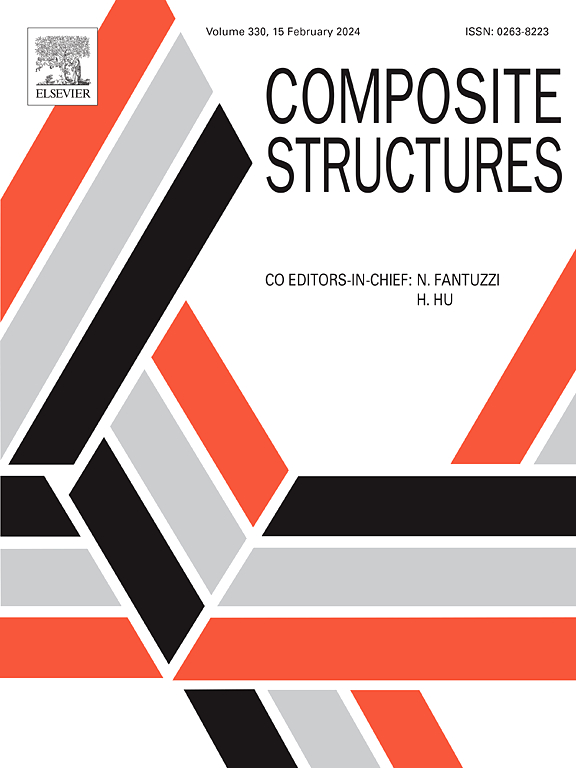Strength-based RSM optimization of concrete containing coarse recycled concrete aggregate and raw-crushed wind-turbine blade
IF 6.3
2区 材料科学
Q1 MATERIALS SCIENCE, COMPOSITES
引用次数: 0
Abstract
Recycled Concrete Aggregate (RCA) and Raw-Crushed Wind-Turbine Blade (RCWTB) are waste materials obtained from decommissioned wind turbines after crushing their foundations and blades, respectively. Their use as raw materials in concrete allows their recycling. RCA increases concrete sustainability, while the fibers of Glass Fiber-Reinforced Polymer (GFRP) in RCWTB (66.8 % wt.) improve its bending performance. Nevertheless, only balanced waste combinations provide an adequate concrete behavior. Following a characterization of concrete in terms of fresh and strength performance, Response Surface Method (RSM) was conducted based on the experimental results to define the optimum waste combinations to reach a concrete strength performance adequate for engineering applications. RSM highlighted the need to limit the RCWTB content to 3 % to reach a compressive strength higher than 45 MPa, while amounts below 3 % and above 7 % would allow obtaining a flexural strength over 5.5 MPa. In both cases, the maximum content of coarse RCA should be 80 %. 70 % coarse RCA and a RCWTB amount between 6 % and 10 % would enable to develop concrete mixes with conventional strengths of 30–40 MPa under compression and 5 MPa under bending. RSM results revealed that RCWTB and their GFRP fibers properly behave in concrete with coarse RCA.
求助全文
约1分钟内获得全文
求助全文
来源期刊

Composite Structures
工程技术-材料科学:复合
CiteScore
12.00
自引率
12.70%
发文量
1246
审稿时长
78 days
期刊介绍:
The past few decades have seen outstanding advances in the use of composite materials in structural applications. There can be little doubt that, within engineering circles, composites have revolutionised traditional design concepts and made possible an unparalleled range of new and exciting possibilities as viable materials for construction. Composite Structures, an International Journal, disseminates knowledge between users, manufacturers, designers and researchers involved in structures or structural components manufactured using composite materials.
The journal publishes papers which contribute to knowledge in the use of composite materials in engineering structures. Papers deal with design, research and development studies, experimental investigations, theoretical analysis and fabrication techniques relevant to the application of composites in load-bearing components for assemblies, ranging from individual components such as plates and shells to complete composite structures.
 求助内容:
求助内容: 应助结果提醒方式:
应助结果提醒方式:


